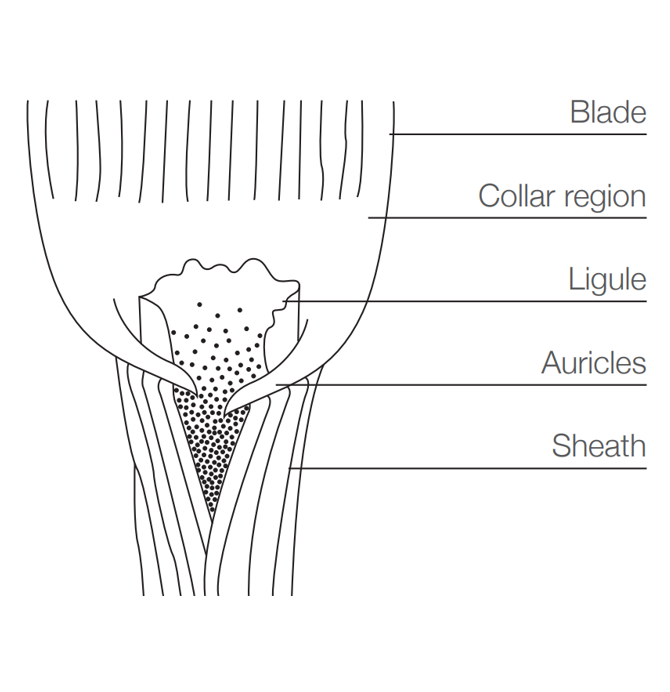- Home
- Knowledge library
- How to identify grass weeds in arable fields
How to identify grass weeds in arable fields
This guidance provides an easy reference to the major grass weeds in the UK, including how to identify and manage them based on an understanding of their biology.
The encyclopaedia of arable weeds
Key features of grass weeds
In grass weeds, each seed contains one initial leaf (monocotyledonous). Broad-leaved weeds seeds have two initial leaves (dicotyledonous).
To identify grass weeds, ask:
- What is the shape, length and direction of twist of the first leaf?
- What does the leaf blade look like – colour, shape, twisting, hairiness, ribbing or tramlines, shape at the tip?
- What does the auricle look like (the claw-like feature at the junction of the leaf sheath and blade)?
- What does the ligule look like (membranous extension at the junction of the leaf sheath and blade)?
- Are the leaves folded or rolled in the stem?
- Are rhizomes (underground stem bearing buds in axils of reduced scale-like leaves) present or absent?
 AHDB
AHDB
Find out about the UK’s grass weeds
To aid weed identification, our guidance features photographs of each weed at four growth stages – capturing the most striking features. It also provides details of the weeds’ life cycle and its typical distribution in the UK.
Herbicide resistance in grass weeds
First identified in black-grass in 1982, herbicide resistance also affects wild-oat and Italian rye-grass. Recent studies have also confirmed the evolution of resistance in brome. Target site and non-target site resistance mechanisms are present in UK grass weeds, to various degrees.
Black-grass: The major resistance problem in England
Italian rye-grass: An increasing threat across the UK
Wild-oat: A limited but widespread problem
Brome: Increased tolerance to commonly used herbicides in some UK populations

